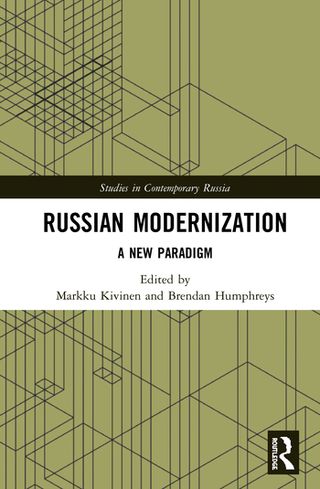?
Russian Modernization: A New Paradigm
Building on contemporary social science, we intend to go beyond current Russian studies by creating a new paradigm in the field. In this chapter, we develop the conceptual starting points of this new paradigm and specify our methodological approach to modernity and modernization. We intend to show that Anthony Giddens’ structuration theory gives us instruments for methodological specifications that broaden the horizon towards more comprehensive research programmes. Previous approaches do not seem to find ways to examine both structures and agencies at the same time. Russia’s development is explained either as an inevitable structural process, or only as a result of the intentions of the actors. We argue that it is essential to be able to study modernization both as a representation and as a broader analytical category referring to basic structural challenges.
